What do you reckon is the most obscure Ford Laser ever made? The mind-your-heels Carla Zampatti editions? The long-lived but mostly ignored Laser wagon? Or the boosted, all-paw KE Laser poster child, fully imported directly from Mazda in Japan rather than assembled by Ford in Sydney?
I reckon you’d be pretty accurate, at least recognition-wise, if your instinct said option number three – the 1987-90 TX3 4WD Turbo, the most expensive ’80s Laser ever sold in Australia. But how has the greater populous managed to forget the hardest-charging, most technology-packed four-cylinder Ford up to that point?
First, some background. The Laser (and its Meteor sedan sister) was born out of an economically driven desire by Ford Australia to expand its small-car market penetration via a cultural shift away from European-derived Fords to Japan. The Ford Motor Company had begun a model-sharing arrangement with Mazda in 1971 and, in 1979, it acquired a 24.5-percent stake in Mazda’s parent company, Toyo Kogyo.
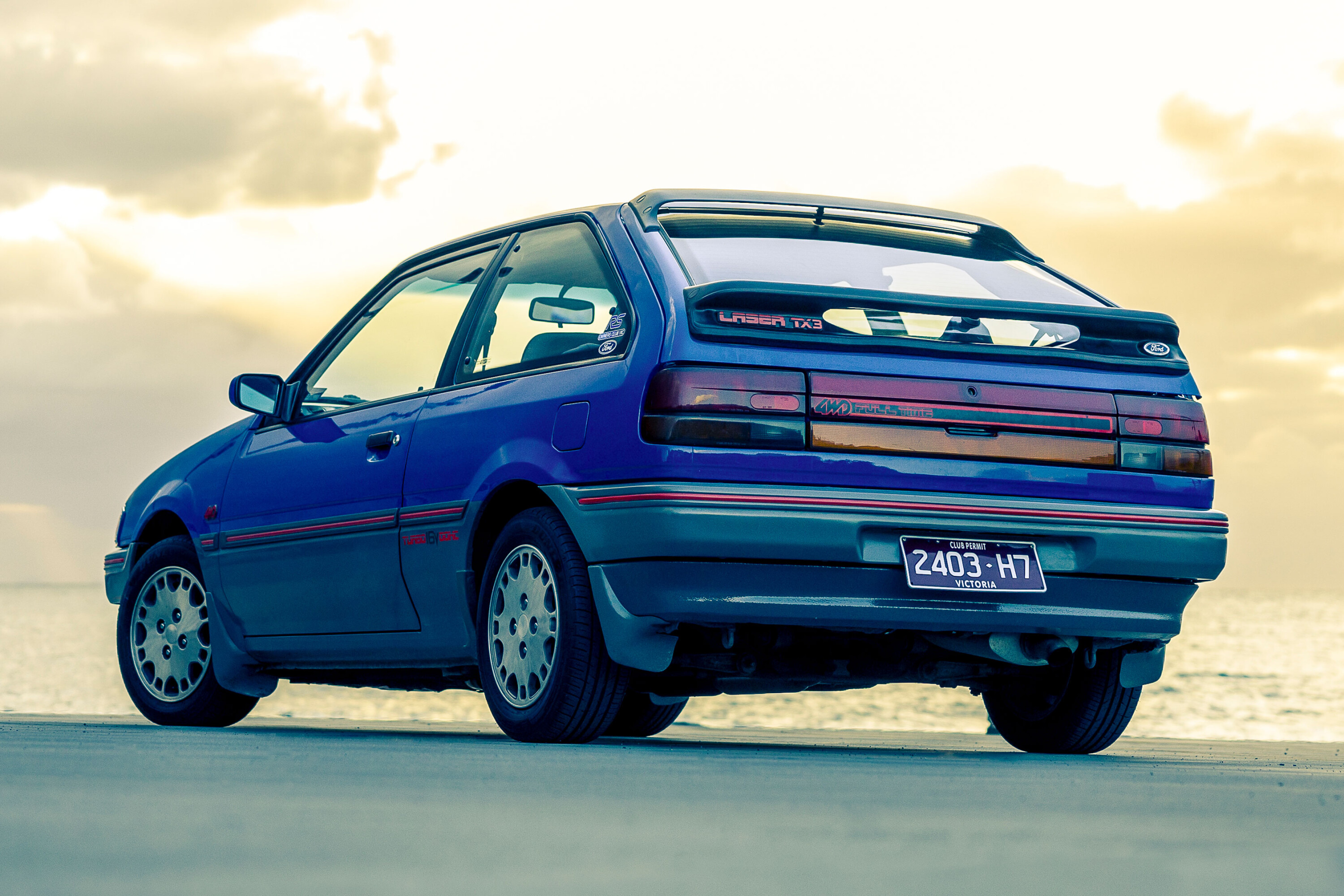
By this time, Ford Australia’s styling and engineering input into the first frontdrive Mazda 323/Familia program was already well-progressed, so when the KA Laser launched here in early 1981 – six months after the Mazda version – it sported locally penned styling revisions (including a unique side-window treatment for the five-door hatch), a three-door Laser Sport and a different suspension tune and tyres.
Unlike the Escort models that had preceded it, the Laser was an instant sales smash hit – so much so that when people look back on the Laser’s dominating presence among the burgeoning ’80s front-drive scene, it’s the everypersons’ GL – particularly the second-generation ‘bubbleback’ version (launched in late-’85) – that people remember most. Indeed, the KC/KE Laser hatch shared only its windscreen, door handles and exterior mirrors with the related BF 323 hatch, emphasising the Laser’s distinctly youthful image – a phenomenon unique to Australia.
While Ford’s Homebush plant in Sydney was extensively (and successfully) refurbished for the Laser/Meteor to achieve a Japanese level of build quality, the Laser was also produced in Japan, alongside the 323, and sold through a unique Mazda dealership channel called Autorama that also flogged the Australian-restyled, Mazda-626-based Ford Telstar.

Laser’s Australian range was relatively simple (three engines, three transmissions, four trim levels in the KA/KB), but the Japanese-manufactured line-up spanned an array of drivetrain types – with fuel injection and turbocharging as early as 1983 – and bodystyles that, by the 1985 secondgen Laser, included a cabriolet, wagon, commercial van and, pertinently, high-tech turbocharged and all-wheel-drive variants. Australia’s adoption of a mandatory unleaded petrol diet in 1986 finally opened the door for these hot-shot Japanese Lasers to be marketed locally.
Ford already knew how to produce great small performance cars, starting with the Cortina GT500 in the 1960s and continuing with the Escort Twin Cam and GT1600, Escort RS2000, and even the Laser Sport.
When the twin-carburettor version of the KA Sport launched in 1982, its only small-car rival was Mazda’s equivalent twin-carb 323. And Ford Australia remained focused on amping its small hatch’s sporting appeal, starting with the much-improved ’83 KB Sport (featuring near-identical four-leaf-clover alloys to the European Escort XR3) and the limited-edition 78kW KB Laser Turbo (1985), offered in both three- and five-door form.
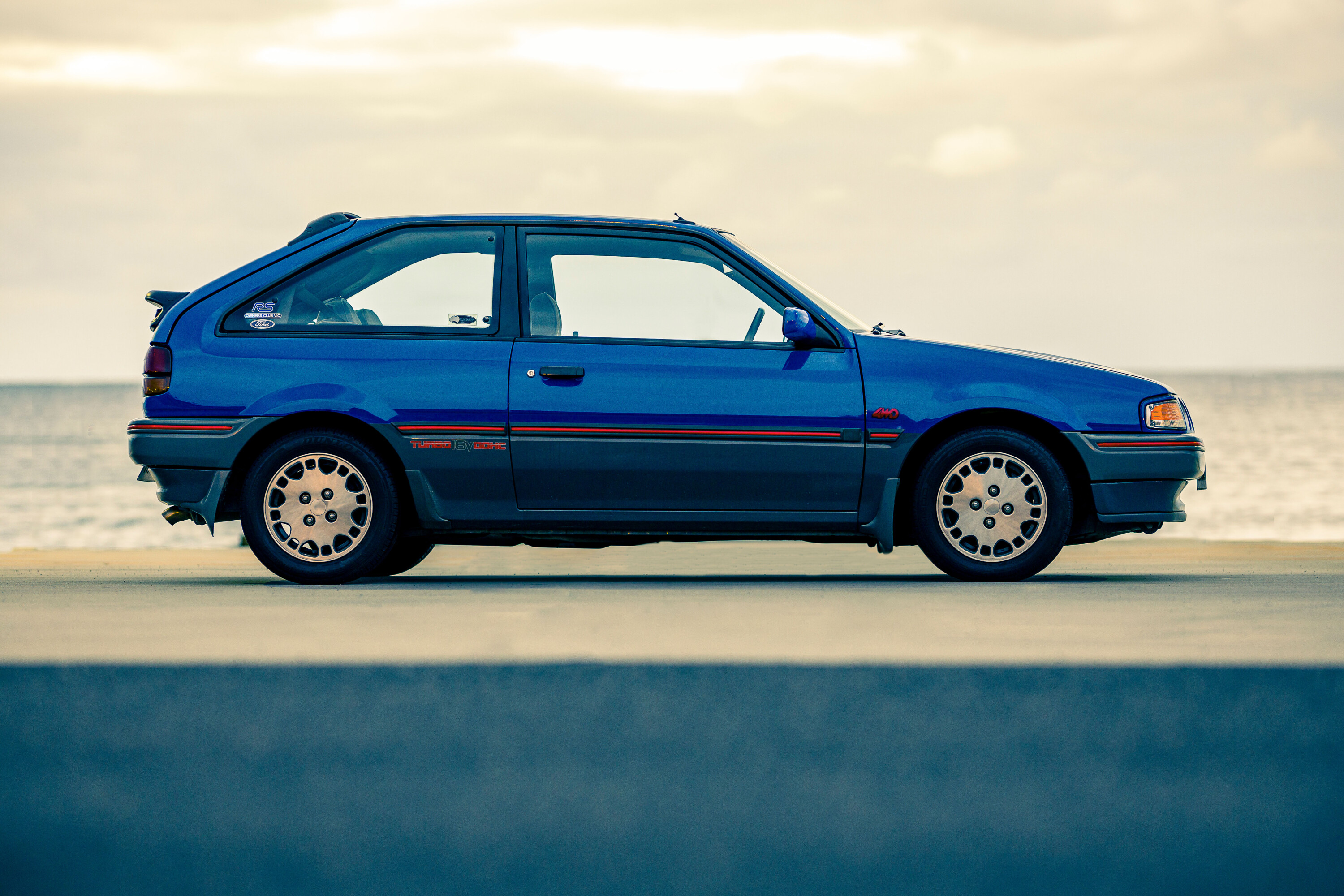
But from a contemporary perspective, these were essentially ‘warm’ hatches – much like Nissan’s five-door N12 Pulsar ET Turbo (1984-87) – rather than something that could rival a properly hot, European-market Escort RS Turbo or Mk2 Volkswagen Golf GTI 16V – each only offered in three-door form (because pukka hot hatches were never five-door!).
In that context, the ’87 KE Laser TX3 Turbo was every inch a hot-hatch. Three-door-only body? Check. Double overhead-camshaft , 16-valve, fuel-injected, turbocharged and intercooled engine? Check. Searing 15.8-sec standing 400m time – making it the fastest accelerating front-drive car ever sold in Australia at the time? Check. Serious torque-steer? Um, check.
Like the turbocharged Mazda 323 SS introduced just before it, the front-drive Laser TX3 Turbo was quickly joined by a much grippier ‘4WD Full Time’ variant for $4000 extra, matching the price premium the front-drive Turbo commanded over the regular TX3. But while the front-driver was assembled in Homebush using an imported drivetrain, the 4WD Turbo arrived fully built-up from Hiroshima.

So, years before Subaru’s Liberty RS Turbo and Impreza WRX, and Mitsubishi’s Galant VR-4 and Lancer GSR, Ford (as well as Mazda) was already sporting a swaggering, technology-crammed, all-wheel-drive flag-bearer with the ability to slay, regardless of the surface. Most of the new-millennium Ford faithful don’t recall its existence, yet the KE Laser TX3 4WD Turbo is absolutely worth remembering.
For its $25,910 sticker (almost $3K cheaper than its Mazda equivalent), the TX3 4WD Turbo featured the same 1597cc boosted B16 engine as the front-driver, producing 100kW at 5000rpm and 184Nm at 3000rpm, with a reputed 90 percent of that torque peak available from 2500rpm. But it also featured a ‘heavy-duty’ five-speed manual transmission derived from the 2.2-litre Telstar TX5 Turbo’s gearbox, as well as 15mm-wider front and rear tracks, permanent all-wheel drive with a 50/50 torque split and a manually locking centre diff , and pneumatically height-adjustable, self-levelling suspension. That’s deeply impressive for 1987.
Buyers paid handsomely for this technology privilege, however. The TX3 4WD Turbo included air conditioning in its price, yet it still only had manual windows and it featured the same 14-inch alloy-wheel design as a base TX3. Apart from what lurked underneath, the only signifiers that you’d spent almost 45 percent more on your grippy, boosted Laser hot-hatch was a red 4WD badge on each front guard, ‘TURBO 16V DOHC’ decals ahead of the rear wheels, and a ‘4WD FULL TIME’ decal on the bootlid garnish between the KE’s restyled tail-lights.
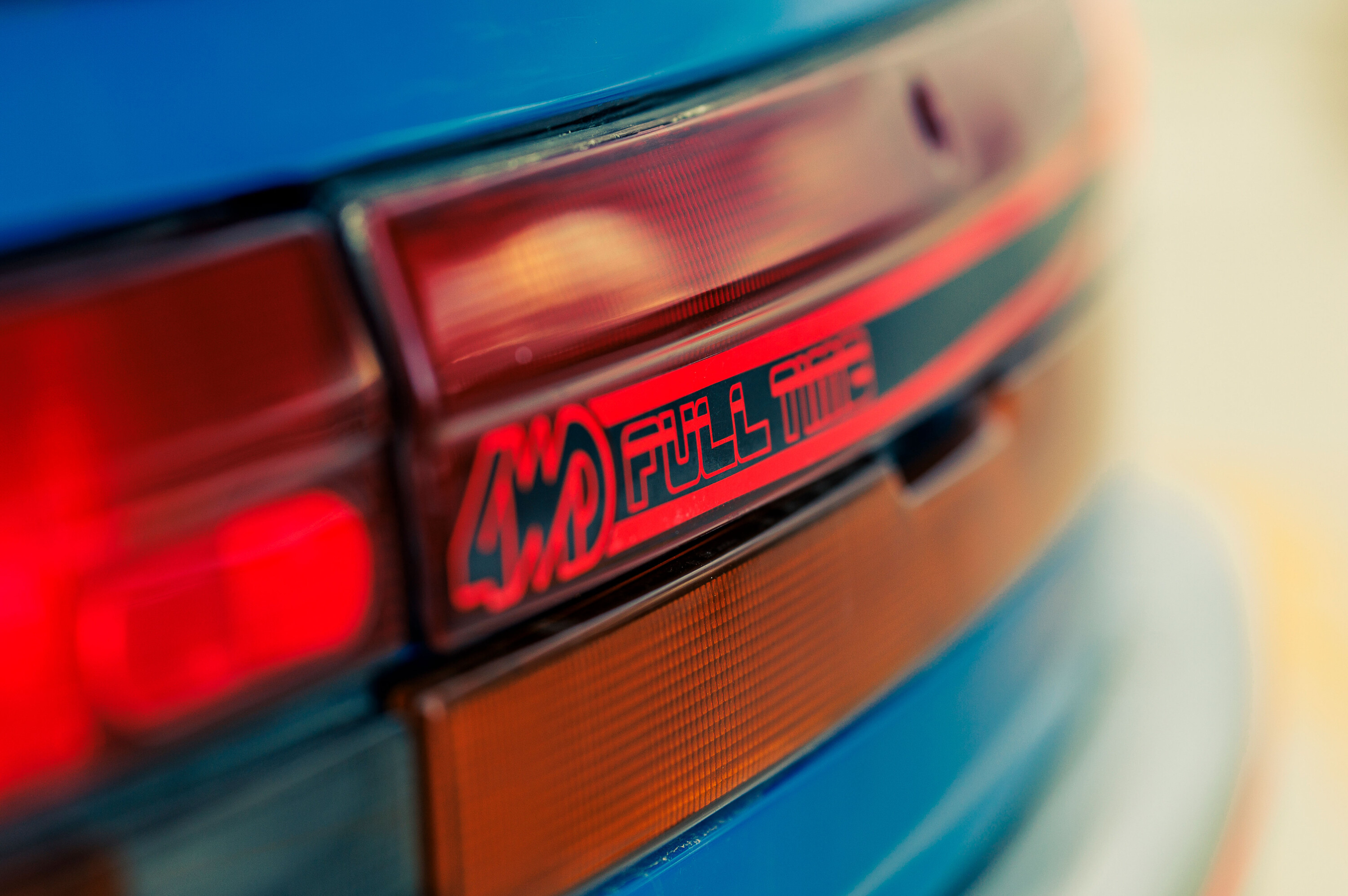
Inside, the sole difference between the front-driver and the 4WD Turbo could be found in the centre console. In lieu of the front-driver’s radio-cassette deck (which was repositioned below, replacing a flip-out console cubby) sat two panels, each with red-banded edging and supremely ’80s egg-yolk-yellow font. The top panel featured a driveline schematic with an indicator light in the middle and a button to the right to activate the ‘center differential lock system’ (in US spelling). And below it sat the ‘height control system’ with two settings – high or low.
While talking about the KE Laser TX3 4WD Turbo in past tense very much applies to the number that have been rallied or stacked over the years, it also refers to the car’s fancy damping and suspension system, which is allegedly cost-prohibitive to replace in 2024 … if you can find the componentry. But back in 1987, it worked surprisingly well – especially compared to the flawed multi-setting dampers that Mazda/Ford offered on some larger Japanese-sourced models.
Set to ‘high’, the 4WD’s ride height offered 10mm more clearance than the front-driver, while on ‘low’ it sat 20mm lower for a ground clearance of just 130mm – enhancing its centre of gravity. And the system also offered automatic self-levelling to maintain these ride heights in all conditions.
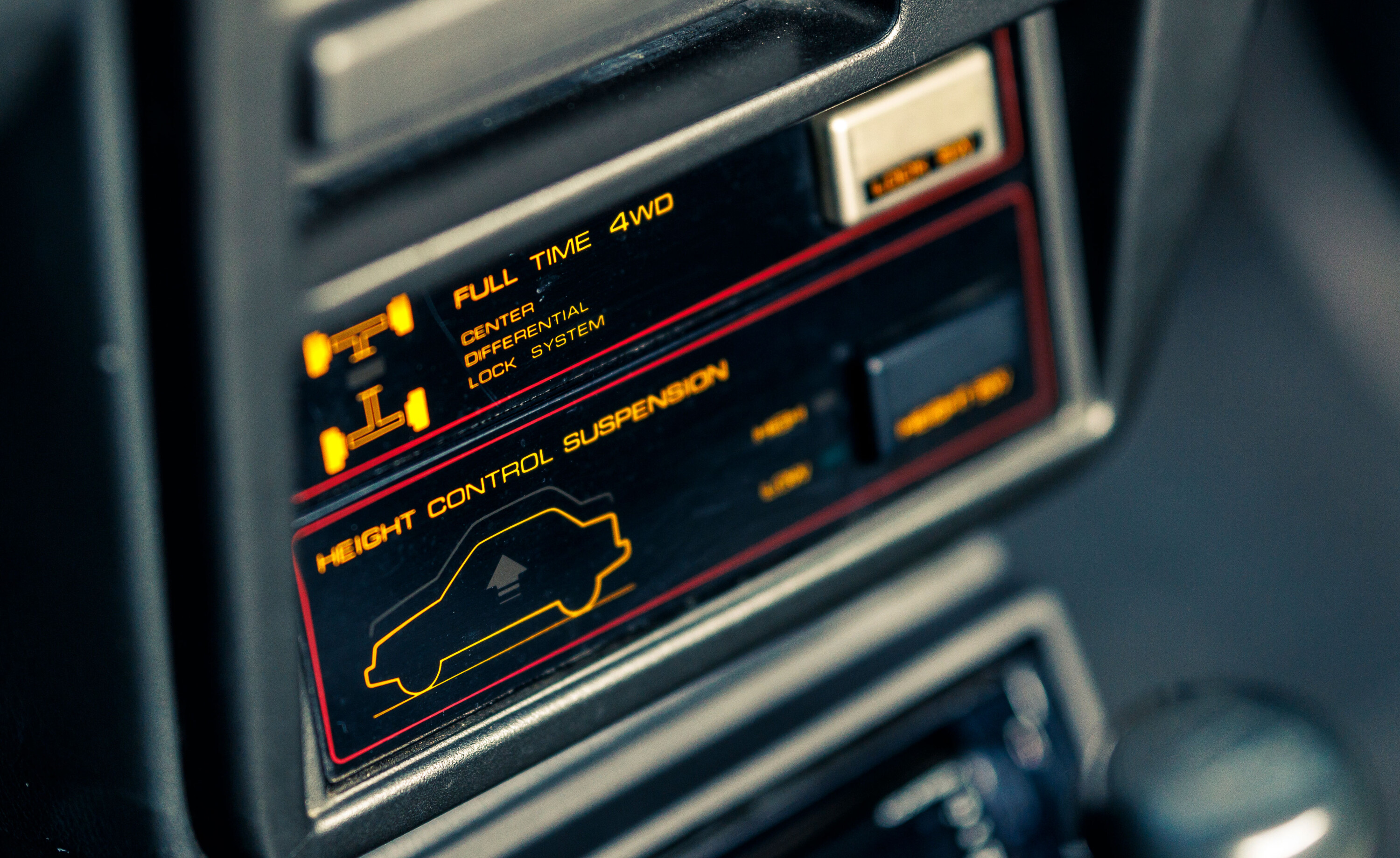
Period Wheels road tests highlighted the 4WD Turbo’s resistance to understeer in all but really tight corners, as well as its overall grip and neutrality, though they also mentioned a degree of numbness in the power steering and the poor dirt-road grip of the Japanese-made 185/60R14 Bridgestone Potenzas. Back in ’87, anything with ‘4WD’ in its title was presumed to have some kind of loose-surface predilection, and to that end the Laser’s locking centre diff was all about delivering the best traction once the bitumen ran out.
Adding 110kg to the front-drive Turbo’s waistline failed to make too much of a dent in the Laser’s performance. We recorded a standing 400m time of 16.2sec (0.4sec slower) while Ford claimed 0-100km/h in 8.5sec, which was pretty quick given that Holden’s VL Commodore Turbo – the police highway-pursuit vehicle of choice – was recording high-7s. But it was the TX3 Turbo’s mid-range acceleration that made it feel rapid. An undersquare engine design combined with a relatively modest 8psi of boost pressure made the TX3 Turbo extremely driveable – without the serious turbo-lag that blighted many performance cars well into the ’90s – and even today, the smoothness and effortlessness of its response makes it a quick little sleeper.
The TX3 4WD Turbo’s all-independent suspension – struts up front, with another pair of struts and dual lower links at the rear – received a number of hardware upgrades (including stiffer front mounting bushes and lengthened lower lateral links at the rear) to enhance its control in press-on driving.
According to the owner of the blue car you see here, Chris Fox, there’s little reason to question Ford/Mazda’s engineering decisions of the time given how competently the TX3 4WD Turbo still drives today – in particular its mid-corner pace. And while the 4WD version clearly gained a few kegs in its transition to powering all four wheels, an 1175kg kerb weight seems laughably fl ab-free today, and its 3995mm overall length (riding on a dinky 2400mm wheelbase) seems incredibly compact.

One aspect that has stood the test of time better than anyone could’ve predicted is the KE Laser TX3’s four-headlight styling. At launch, detractors described this front-end treatment as ‘tacked-on’ but it actually prefigured a styling trend that would proliferate throughout Ford’s XR-branded model line-up in the ’90s – starting with the ED Falcon XR6 and XR8 in 1993. And while the TX3 4WD Turbo’s understated overall styling appears relatively clean and tasteful when viewed through a contemporary lens, perhaps it’s this lack of visual drama – and differentiation from a base 61kW TX3 – that made this $26K all-paw slingshot such a rare sight on our roads, even then.
According to our correspondence with Ford Australia, just 412 TX3 4WD Turbos were sold across a two-and-a-half-year period – 60 of them painted Cobalt Blue. Compared to the huge numbers of regular Laser/Meteors sold each year – sometimes nudging 40,000 units – that average of barely 200 a year makes the TX3 4WD Turbo a very rare thing almost 40 years hence.
Park a KE TX3 4WD Turbo alongside any 1980s European Ford Escort RS Turbo and you can see why Aussie buyers failed to appreciate the value in paying $8000 more for mainly stuff you couldn’t see. The Japanese creation almost cowers in its demureness alongside the overtly masculine, UK-developed hot Escort. But while the Escort RS Turbo is undoubtedly tough to look at and rapid in a straight line, it lacks the mechanical sophistication of the Laser’s Mazda developed hardware, which continues to shine in 2024.
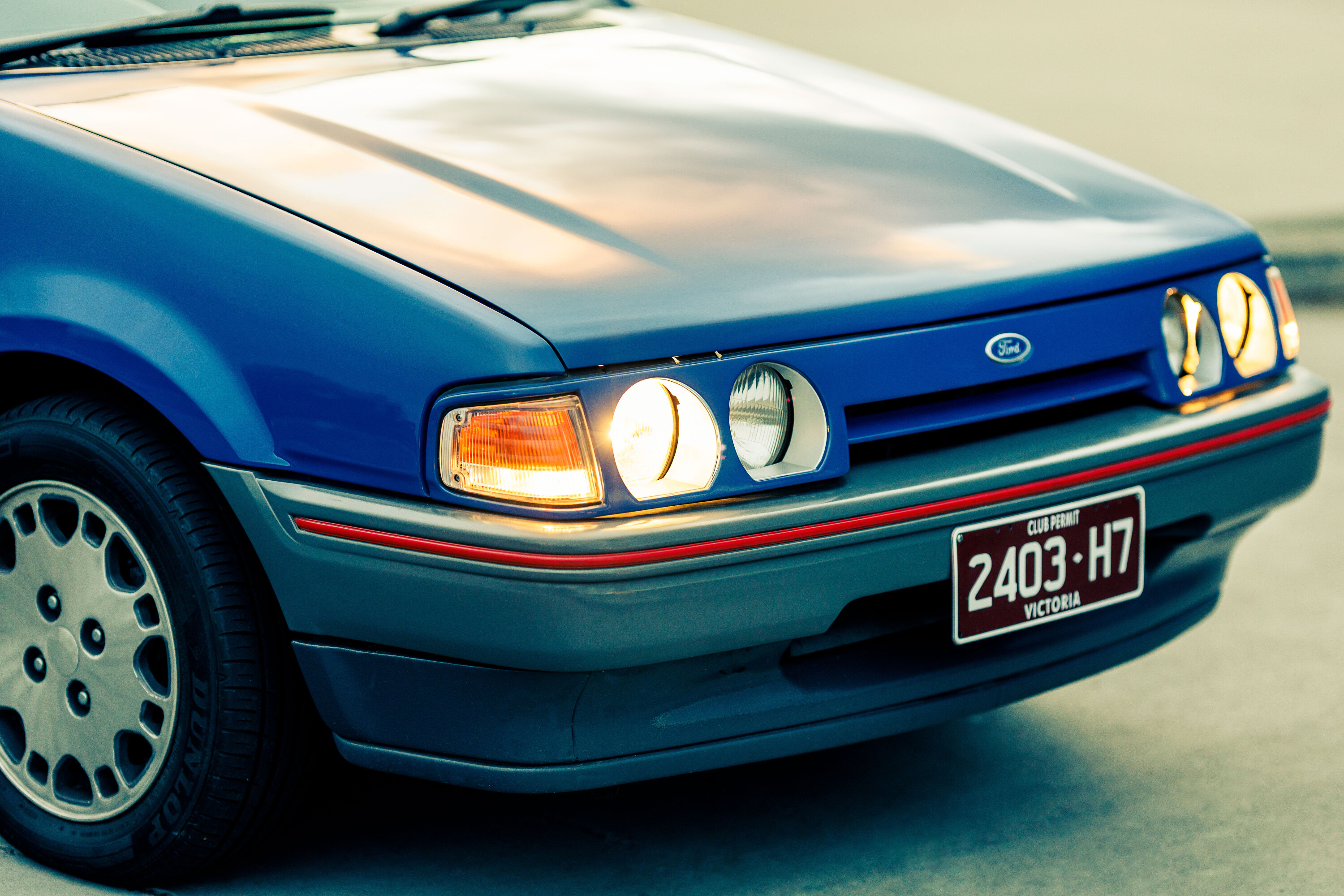
As I write this, a white 250,000km-old KE TX3 4WD Turbo sold in Sydney in less than a week, asking $18K with ice-cold air-conditioning. That’s around double what its naturally aspirated TX3 cousin might be capable of achieving, meaning those in the know definitely know.
That’s surely a significant part of the Ford Laser TX3 4WD Turbo’s ongoing allure – the most obscure 1980s Laser ever produced also happens to be the best, by a huge margin. But if that doesn’t make a Modern Classic by very clear definition, then perhaps a Zampatti Collection Ford Meteor in Moroccan Beige might be more fitting.
1987 Ford Laser TX3 4WD Turbo Specifications
- Engine: 1597cc 4cyl, dohc, 16v, turbo
- Max Power: 100kW @ 5000rpm
- Max Torque: 184Nm @ 3000rpm
- Transmission: 5-speed manual
- Weight: 1175kg
- 0-400m: 16.2sec (tested)
- Top speed: 190km/h
- Price: $15,000-$20,000
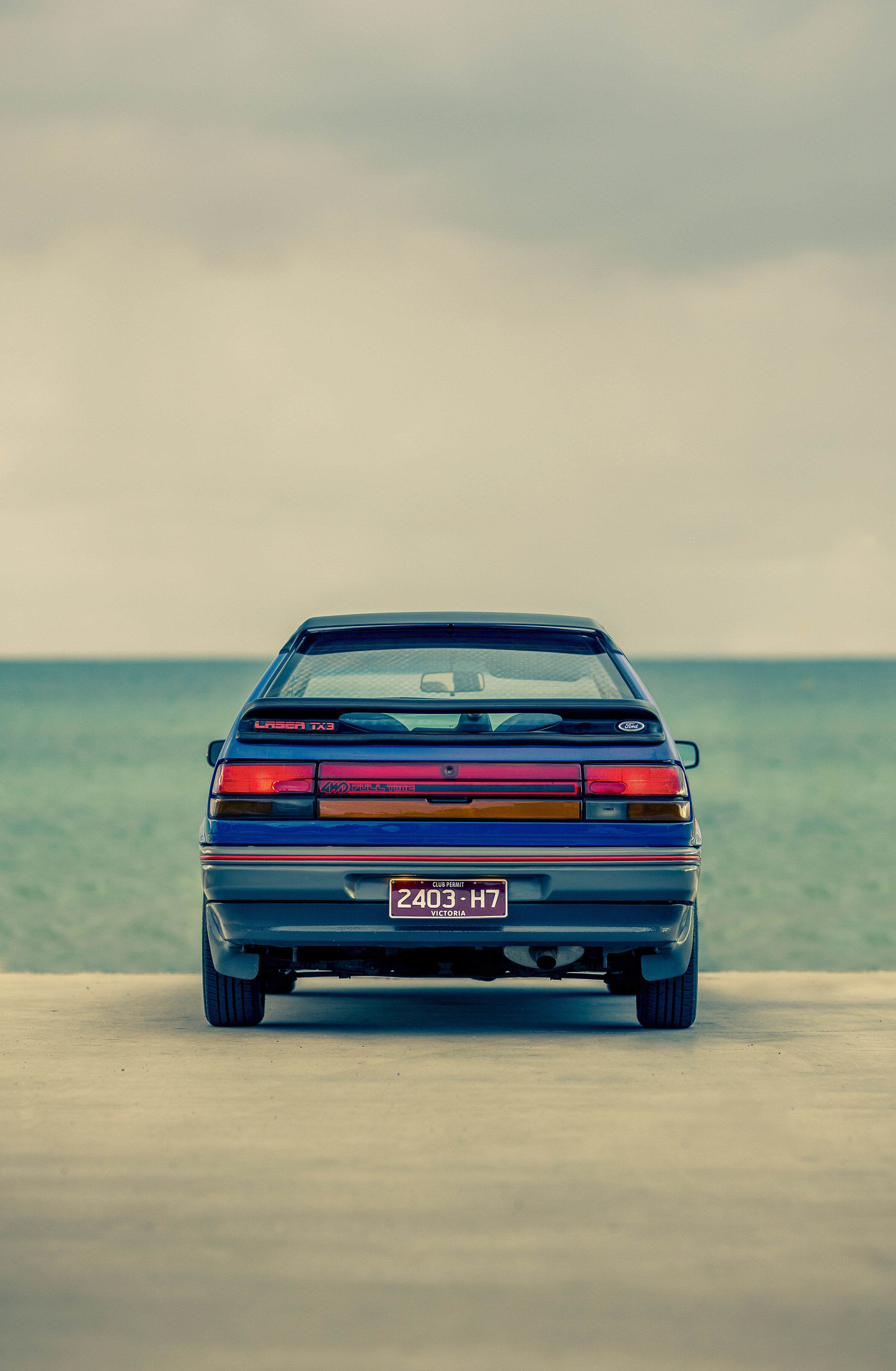
The infamous Zampattis
Rarer in terms of build numbers than the TX3 4WD Turbo, but more widely recognised, Ford Australia produced two series’ of Carla Zampatti Lasers – special editions outfitted by the well-known fashion designer to appeal directly to women. A two-tone KB Carla Zampatti Laser appeared in early 1985 (pictured), based on a GL auto, with an embellished brown interior and ‘Carla Zampatti’- emblazoned upholstery, while another round two years later saw Zampatti Collection KC Lasers in Stark White or Jonquil (pastel) Yellow, each with colour-coded alloy wheels, as well as a Zampatti GC Meteor sedan in Moroccan (pastel) beige. All super rare. And so ’87.
We recommend
-
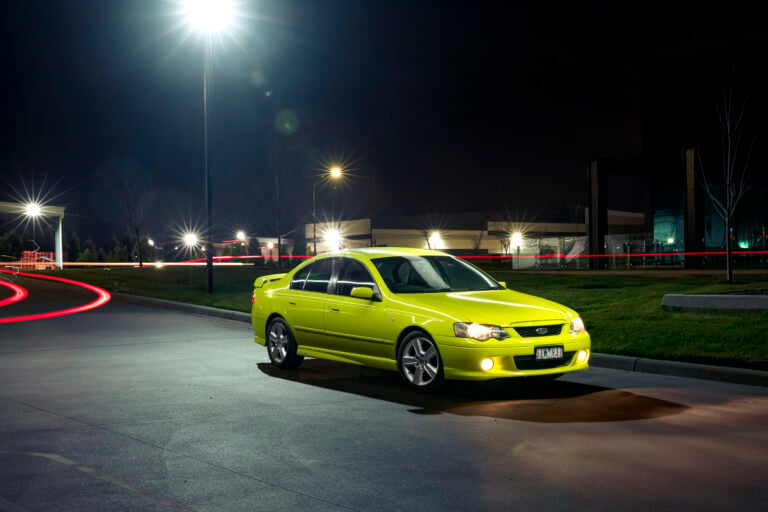 Features
FeaturesModern Classic: Ford BA Falcon XR6 Turbo
Adding a turbocharger to Ford’s BA Falcon sports sedan elevated it to Aussie-icon status
-
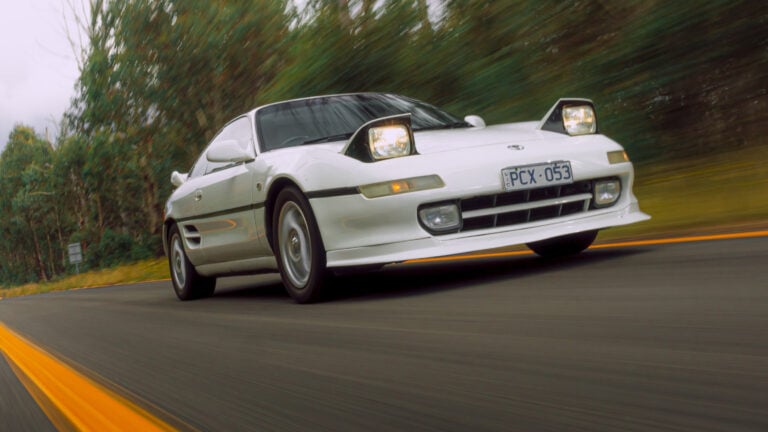 Features
FeaturesModern Classic: Toyota MR2
We tell the background story on how Toyota both spoiled and then fixed the MR2.
-
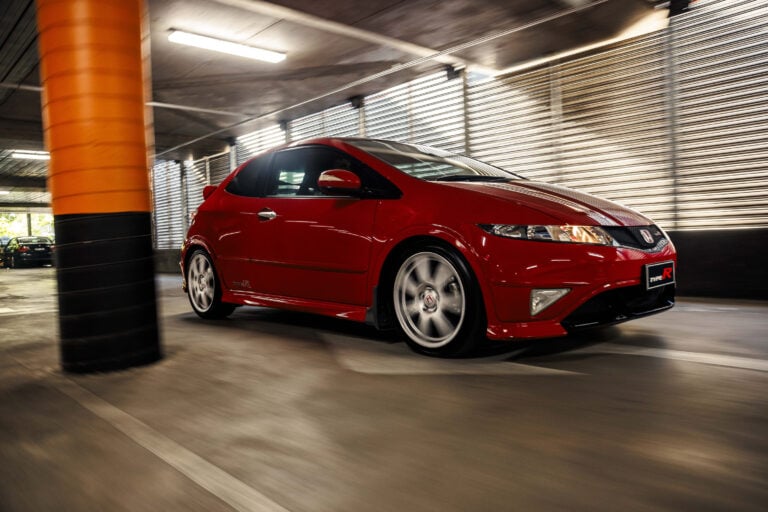 Advice
AdviceModern Classic: Honda Civic Type R FN2
Is it about time the FN2 Type R shared the love?





